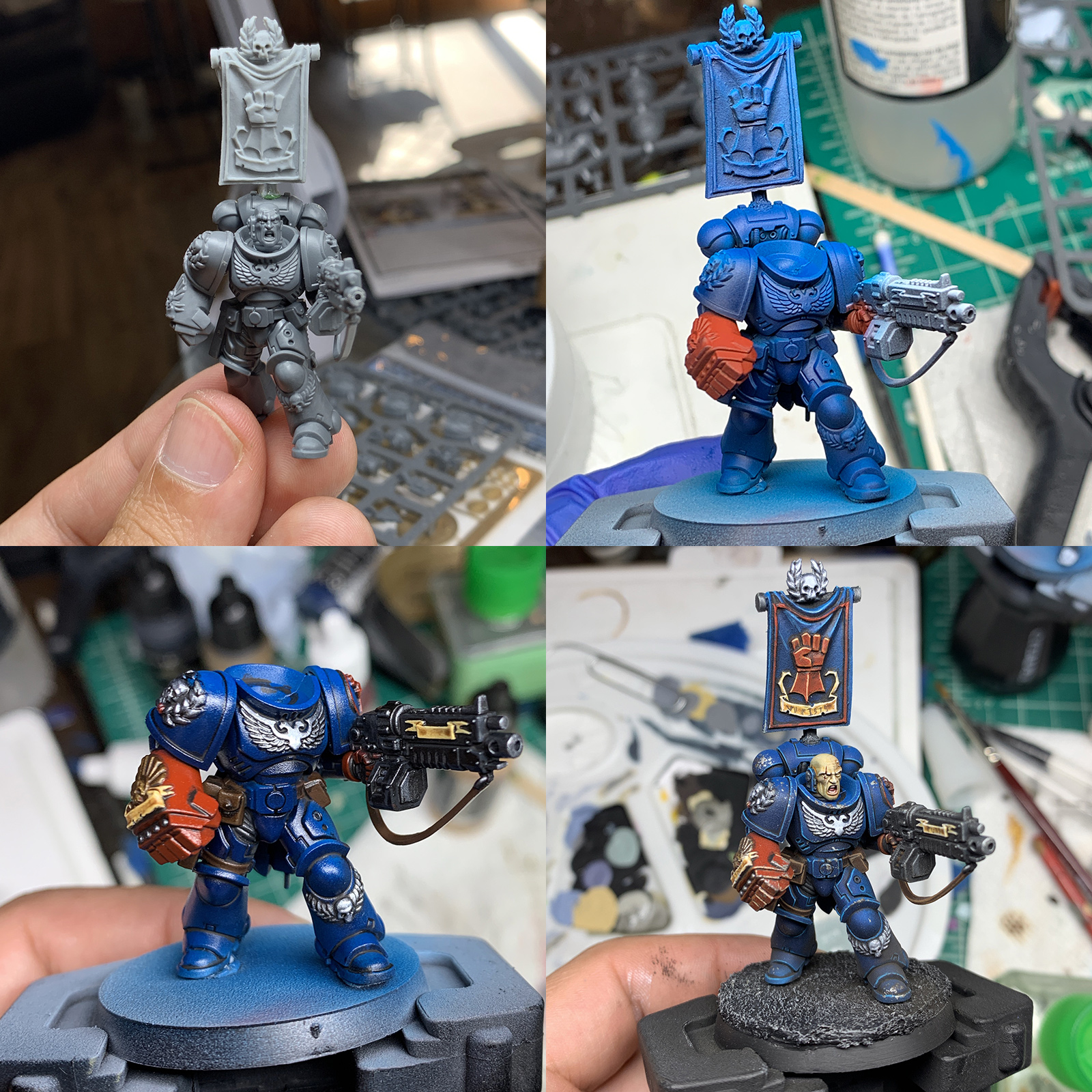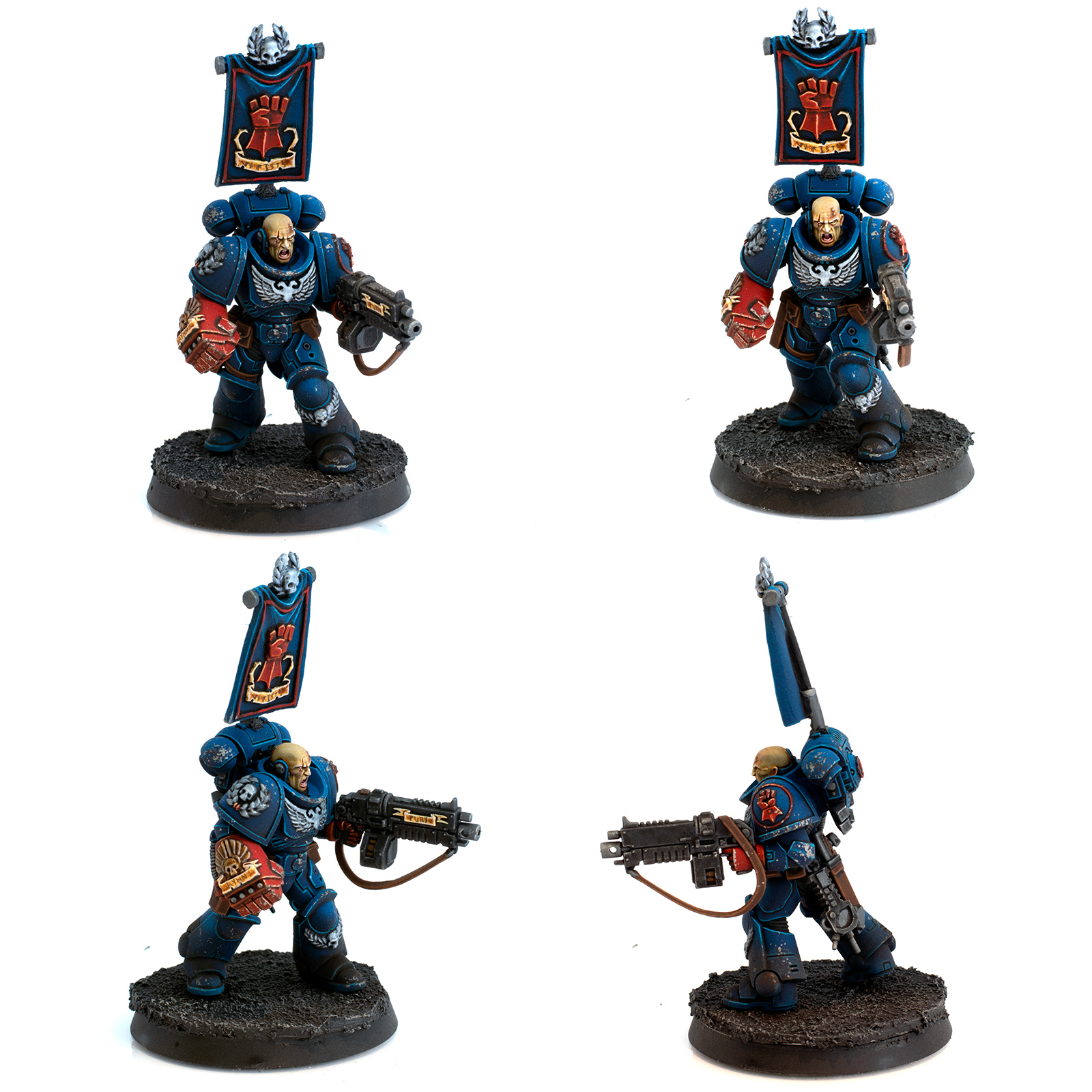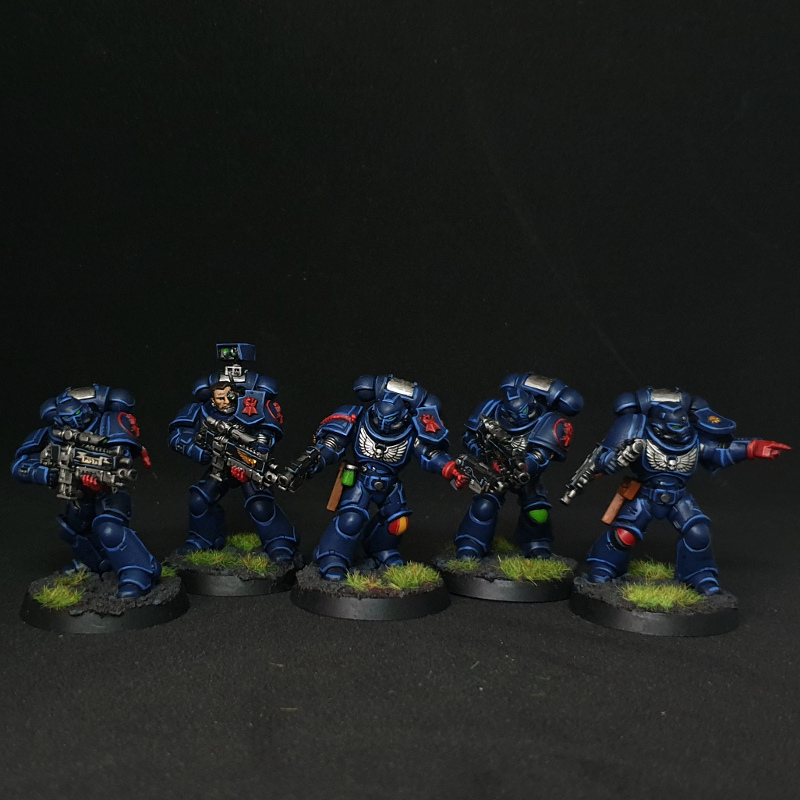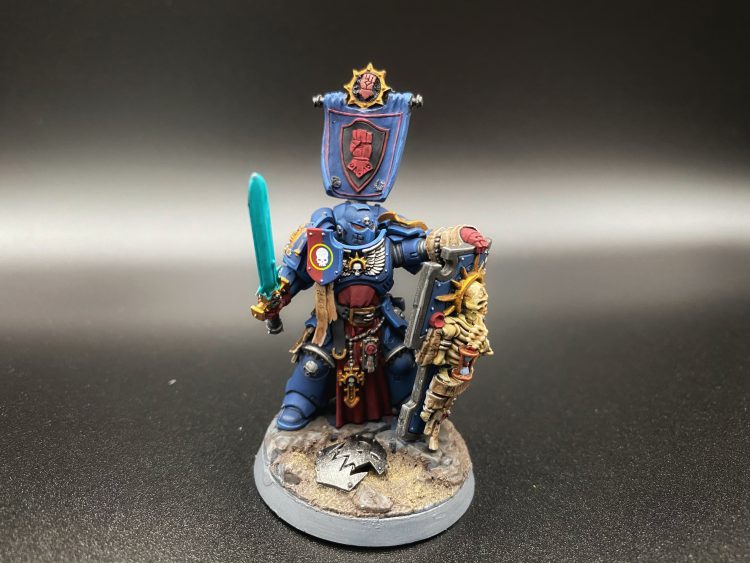In our How to Paint Everything series, we take a look at how to paint, well, everything, with a look ta different techniques and approaches from different artists. Today we’re looking at the original Space Marines and staunchest defenders of humanity, the Crimson Fists.
Like the Black Templars, the Crimson Fists are a successor chapter of the Imperial Fists. When Guilliman decreed that the legions would be split into smaller chapters, Dorn nearly rebelled but eventually consented and so the youngest of the legion became the Crimson Fists.
All right, let’s get this out of the way: the Crimson Fists get owned a lot. Whether it’s the classic Last Stand by David Gallagher, the updated Primaris Version, or even the original cover of Rogue Trader, the Crimson Fists are prone to finding themselves in a desperate struggle for survival. What makes them great is that in the face of the most desperate odds, they never lay down and die. They fight to the end and they prevail. Crimson Fists represent the epitome of tenacity in Space Marines, and in an uncaring universe that will someday destroy you, there’s something undeniably noble about the Crimson Fists’ spirit. They’re the Chumbawamba of the 40K universe.
One of the more famous (or infamous) accounts of the Crimson Fists in the 41st Millennium was the fall of their homeworld, Rynn’s World. Under invasion by an Ork Waaagh! led by Snagrod, the Arch-Arsonist of Charadon, the Crimson Fists mounted a heroic defense to repel the greenskins. Unfortunately, whether due to Inquisitorial sabotage (they do hate sons of Dorn after all), a failure to follow proper preventative maintenance schedules, the whims of Chaos, shoddy 41st millennium manufacturing, or just plain bad luck, an orbital defense missile fired from the Chapter’s fortress-monastery managed to misfire and blow up the Crimson Fist stronghold. In one fell swoop, most of the chapter was atomized, reducing the Crimson Fists to less than half strength. As you might expect, this led to a desperate struggle for survival, led by Chapter Master Pedro Kantor (certified bad-ass), where the Crimson Fists emerged severely bloodied (or nearly dead) but victorious.
While the survival of the chapter was definitely in question after the fall of Rynn’s World (what with all the lost geneseed, relics, and what have you) and subsequent daemon invasion (because of course), Deus Ex Primaris has fortunately restored the chapter to near full strength (which also means a full Primaris Crimson Fists force is extremely fluffy). Just recently, the Crimson Fists played an important role in the defense of Vigilus.
Covered in this Article
- How to paint Crimson Fists space marines, with a look at different approaches from different painters.
- Notes on the Heraldry of the Crimson Fists and how they mark their companies and squads.
Crimson Fists are pretty non-compliant when it comes to heraldry. The most striking aspect of their color scheme is of course the eponymous left red fist that all Crimson Fists bear. Veterancy is indicated by a right red fist as well. Strictly speaking this is for 1st Company Veterans, but many people like to use it to indicate any kind of senior model, such as a Sergeant. Perhaps because of their decimation, Crimson Fists don’t use company markings, leaving their shoulder trim blue. They do use typical squad markings (gothic script) and battlefield role markings. Since the Crimson Fists use silver for the chest imperialis/aquila, white can be a good color for heraldic markings, alongside red to add color and break up the blue armor. Crimson Fists are a crusading chapter so a crusade badge on a kneepad can be a nice bit of detail to add, much like with Black Templars. When it comes to painting Crimson Fists, you’re free to use whatever shade of blue suits your fancy, though generally the recommended starting color is Kantor Blue (which shares a name with noted Crimson Fists hero, Pedro Kantor). Though as we’ll see, you can create striking results with a variety of different blues. Crimson Fists Heraldry - Click to Expand
Crimson Fists Heraldry - Click to Expand
Painting Crimson Fists
Alfredo's Method - Click to Expand For Lieutenant Salazar, I used the 500th store Lieutenant as my base model. Then, I used the power fist from the Vanguard Veterans kit because I wanted a right-handed power fist so that Salazar could fist bump Lieutenant Domeric (and the arm is magnetized for just that purpose). I also added a very angry head and resin back banner with a giant fist on it. This was a relatively straightforward model to paint. And the finished model: If I were to do something different, it would be adding a crusade badge to one of the kneepads just to add some visual interest and break up the blue. Otherwise, I was pretty happy and I really wanted the focus to be on the giant powerfist and the screaming face.

RichyP's Method - Click to Expand RichyP gives us a method for speed painting Crimson Fists, with this 90-minute model that offers a fast, easy way to paint the army. Prime the model black Paint all the armour plates in VMC Dark Prussian Blue Wash the model in Nuln Oil Edge highlight the armour in Macragge Blue. Add a smaller edge highlight of Russ Grey Paint wraithbone over the areas that will receive Contrast paints (face, purity seal, and Ork head in this case). Paint the chest eagle, weapon and ribbing in VMA Steel and the fist + wax seals in Mephiston Red. Paint the flesh in Darkoath Flesh, the Purity Seals in Skeleton Horde and the Ork head in Warplightning. Wash the metals in Nuln Oil. Paint writing on the seals in Chaos Black. Edge highlight the reds in Cadian Flesh, Highlight the face in Kislev Flesh and using Ulthuan Grey add some markings to the armour. Wash the eye sockets in Drakenhof and add a small line of Wraithbone in the middle. Now spend 10 attempts at getting the pupils straight (repeat the Wraithbone, Drakenhof combo if you mess up) using Eshin Grey. Liam's Method - Click to Expand Crimson Fists were my first army when I got back into 40k in 2008. I played Blood Angels as a kid, and I wanted something different for a new army – but apparently not so different that they weren’t Space Marines. Inevitably I now have a Blood Angels army anyway, but also over the years I’ve accumulated somewhere around 12,000pts of Crimson Fists. As you might expect, the painting techniques and colours used have changed a lot, not least because GW have gone through one or possibly even two changes in their range in that time, and I am a corporate whore who mostly paints with GW paints. The modern iteration of the scheme is as follows: Then wash as follows: Then it’s highlighting time! That’s all nice and easy! The challenging bit comes after that – the armour. There are a lot of edges to Mk 10 power armour, never mind Gravis, so this takes a fair amount of time. My first layer of highlighting comes from hitting all the edges with Altdorf Guard Blue, and then following up with a thinner highlight of Calgar Blue. This takes forever, but it also makes the edges really sharp – it’s very ‘Eavy Metal although naturally not as good. The other thing I’ve been doing recently is adding little individual badges and things to the models – you can see a few on the photo, on the knees of the three guys on the right. This helps break up the model, adds some points of interest, and some variety in the painting. SRM wrote an excellent article on heraldry which you should definitely read – I’ll certainly be applying more of it to my models in future. Ryolnir's Method - Click to Expand Crimson Fists are my ride-or-die army. I may have blood pouring out of my eyes over the recent FAQ, but they are the army I started in 4th Edition and keep coming back to almost 15 years later. The last two years I’ve been working on perfecting my Crimson Fists scheme – it’s based heavily on a few different versions of the GW painting guy with some other companies thrown in! I typically try to stay Codex-compliant wherever I can. If I name a paint here without giving the company name, it’s because it’s part of Citadel’s paint line. I typically block out each color with their basecoat, then wash, then highlight each model so I’ll be giving instructions in that order. There’s probably some cleanup to do after the initial basecoat, but this typically gets you into a “he looks like a Crimson Fist!” spot. Onto the shades… And then highlights! And finally, I do the base and varnish the model! My favorite varnish right now is Vallejo’s Mecha Color Matt. Since the model featured in this post features a lot of gold – I use Scale75’s Viking Gold and shade with GW’s new Cryptek Armourshade Gloss. That wraps up our look at Crimson Fists, who are one of the cooler and more storied successor chapters out there. If you have any other Sons of Dorn you’d like to see featured or additional questions about how we paint these guys, shoot us a note at contact@goonhammer.com or drop us a note in the comments below.Step 0
Step 1

Step 2

Step 3

Step 4

Step 5

Step 6

Step 7 – Detail bits





Final Thoughts






